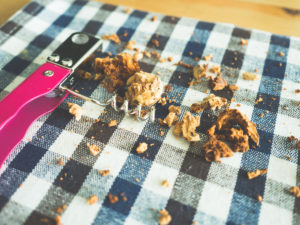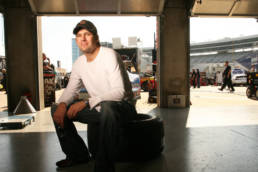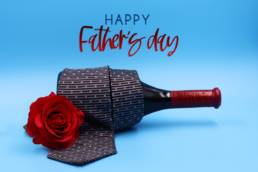Yeah, I bought some wine…now what do I do with it?
Wine storing mistakes to avoid
Congratulations, you have navigated the minefield we call the retail wine shop and got your hooch safely home. Not to burst your bubble, but that is only the first step in the process. You must now give your bottled treasure a safe home until you decide to “pop and pour” (or twist and taste). This commonly overlooked important consideration can render your self-empowered wine choice a disappointing disaster.
We’ve already discussed the red flags indicating wines improperly stowed in the retail shop so now we need to address your home wine storage milieu. How you care for those bottles has much to do with how long they will “rest” before your consumption (of the wine not the medical condition).
Most of us coach-flying, coupon-clipping regular schleps are without a subterranean wine cellar so we have to do the best we can with our meager resources. There are many commercial options (some reasonable and some you may have to sell a kidney to afford), but there are other alternatives as well. Again, it all depends on if your shelf time is measured in weeks, months or years; maybe for some, hours but we do not judge here.
I believe the easiest way to understand wine storage is to understand how not to store it; or the elements that potentially cause harm to your wine. I like to call these the four horsemen of your wine apocalypse (heat, light, vibration and humidity). Ok, perhaps a little dramatic or overstated but you may think otherwise when you go to open that bottle you’ve been saving for your “special occasion” only to realize that it’s completely undrinkable (insert Taps soundtrack).
Heat is one of the major slayers of wine for a multitude of reasons. First, an increase in temperature (say of a storage area), accelerates the aging process in wine. Most chemical reactions increase as temperatures increase so opening a wine when the producer or favorite wine expert recommends you do so, now results in a wine that is, at its best, on the decline. Sorry, but you completely missed that proverbial sweet spot you’ve been waiting for.
If the wine is exposed to extremely high temperatures (like on a container ship crossing the ocean, the non-climate-controlled delivery truck or even the back seat of your car in the heat of the summer), the wine becomes maderized. The term pertains to the purposely baked and oxidized wines of that region but in this instance, it is a death sentence. And, if the temperature is great enough, the pressure inside the bottle can increase to the point that it will push the cork out of the bottle. Crazy as that sounds, the physics-loving wine swillers are already saying to themselves, “ah yes Gay-Lussac’s law.”
Purists will tell you that fluctuations of more than five degrees Fahrenheit in a year can potentially be detrimental, and that may be a bit overstated unless you are aging for decades. We will address the issues with long term storage in a bit, but for now, the take home easily-digestible message: heat is bad.
The next damaging foe of your wine is light, specifically UV light. There is actually an accepted name for this fault, light strike. Although this can occur in red wines, the phenolic structure offers more protection. We see it more so in rosé wines, only because they are more commonly bottled in clear glass, which offers almost no protection. These clear bottled wines can begin to demonstrate quality loss for UV rays in as little as 3 hours, where the green glass bottles offer about 10-fold the protection (30 hours or so).
You would think that wine shop owners would know better than to place those enticing bottles in their windows but you are now too smart to buy those likely tainted bottles. At home, keep those bottles away from that dappled sunlight that comes in the window, even if it is for only a few hours a day. Many commercial wine storage units will have UV blocking glass to add an added layer of protection. Something to consider with you wine storage is the lighting (either in commercial or home constructed areas). LED lights are best for lighting and they put out very little heat as well.
The next issue, vibration, may seem somewhat far-fetched but it occurs more than you would think. Understandably, if you have an older red wine and you don’t handle it gently, the sediment can be stirred up from the bottom and that “grit” will be a bit unpleasant when you drink it. That is an issue but the vibration I’m referring to causes a breakdown in the bottle of important acids and causes a decrease in esters; thus, a reduction in flavor compounds.
I don’t live where there are a lot of earthquakes so where does all this vibration come from you ask. There are a multitude of things that cause vibration around our homes and these are usually so ubiquitous that we don’t even notice them. Any item that has a compressor causes vibration. This is why a well-made wine storage cabinet has a special mounting on the compressor to diminish vibration felt by the wine on the shelves.
Other offenders are dishwashers and refrigerators. Many people put their countertop wine shelf close to one of these or worse on top of the fridge. I’ve also recently seen these wine storage shelves that go in the risers of your staircase. If your house is at all like mine, the stairs are frequently used so not the best idea to have my wine “under foot.”
 The final consideration, and really pertains to longer term storage, is relative humidity. First, this is not you uncle “moist brow” who sweats like a meatloaf. Relative humidity, as opposed to just humidity, takes into account the moisture in the air at a given temperature. So, fluctuations in temperature will affect the amount of humidity in your storage area. The recommended humidity level for long term storage is 50 – 70%, but it’s better to error a little on the high side than a little low.
The final consideration, and really pertains to longer term storage, is relative humidity. First, this is not you uncle “moist brow” who sweats like a meatloaf. Relative humidity, as opposed to just humidity, takes into account the moisture in the air at a given temperature. So, fluctuations in temperature will affect the amount of humidity in your storage area. The recommended humidity level for long term storage is 50 – 70%, but it’s better to error a little on the high side than a little low.
Higher humidity really will not hurt the wine but it will encourage mold growth. Wine cellar mold does an efficient job of destroying the label and is a bit unsightly when pulling a moldy bottle out for dinner guests. It’s the lower humidity levels that can destroy your wine. How can the humidity affect the wine? It’s in a sealed bottle, right?
The wine is protected in that sealed bottle. Protected from oxidation and a multitude of other ruckuses that are aiming to damage your liquid treasure. But the weak link of the bottle protection is the cork closure. If the cork is placed in a very dry environment (low humidity) the cork can begin to dry, shrink and crack, letting oxygen into the bottle. One can easily see how this could be a problem. Prevent cork shrinkage (not the same as when you swim in the ocean) buy keeping the humidity above 55% to be safe.
The necessity for high humidity is the main reason to not use a standard refrigerator for longer term storage as, like we mentioned, the cork will dry and crack. For this reason, I try not to keep unopened wines in the fridge for longer than a week or so. This is also something to consider when purchasing a wine storage cabinet or fridge. Some of these are just fancy chillers that do not take into account humidity (or that vibration thing we mentioned earlier). If you are going to spend some money on one of these for your wines to live in for a few years, do your due diligence and research the heck out of them.
So, what do we do if we do not have a wine storage unit or a subbasement that can double as a wine cave? Most people will buy and cons ume their wines within a few months. That is reasonable to avoid spending a few grand on a wine cabinet or digging a wine cave in your back yard. If this is your purchase-consumption cycle then you are safe to find an ideal place somewhere in your house. The safest places are those that are dark, low traffic areas and do not have wide fluctuations in temperature. Most people will choose the kitchen for convenience but, as you can see, this is one of the worst rooms to use for your wine. A closet can be an option, especially if it is one that you do not enter every day. Granted, the temperature is a bit higher than ideal and the humidity a bit lower but these wines are not going to live here long.
ume their wines within a few months. That is reasonable to avoid spending a few grand on a wine cabinet or digging a wine cave in your back yard. If this is your purchase-consumption cycle then you are safe to find an ideal place somewhere in your house. The safest places are those that are dark, low traffic areas and do not have wide fluctuations in temperature. Most people will choose the kitchen for convenience but, as you can see, this is one of the worst rooms to use for your wine. A closet can be an option, especially if it is one that you do not enter every day. Granted, the temperature is a bit higher than ideal and the humidity a bit lower but these wines are not going to live here long.
Also, to keep those corks wet and swollen, the wines need to be stored on their sides. There are lots of inexpensive wine shelving you can purchase or even make yourself that will keep them lying down and safe from falling or rolling around. All will be fine so long as you keep up your end of the bargain and drink these up within a few months.
I truly hope this helps explain a bit more about wine storage and prevents you from making a costly error with your bottles. If you are considering a more long-term storage solution, check out my opinions on some of the options out there.




